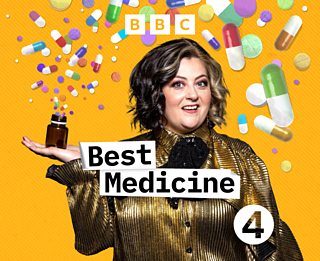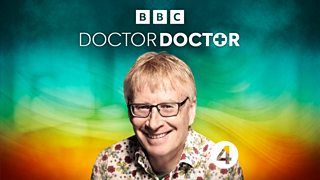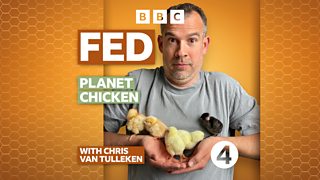Eight fascinating things we learned from Best Medicine
From world-changing science to obscure inventions, unsung heroes and everyday treatments, there’s lots to celebrate in medicine’s inspiring past, present and future. And that’s just what Best Medicine does.
In each episode, scientists, comedians, doctors and historians are challenged by presenter, Kiri Pritchard-McLean to champion what they believe to be truly ‘the best medicine’. And here are eight of the most fascinating things she’s heard this series…
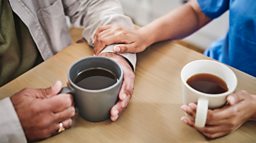
1. Tea creates a safe space
Mental health nurse Ed Freshwater works tirelessly to improve the psychological wellbeing of his patients and cannot overstate the value of one common remedy – tea. Apart from the stress-relieving and stimulating effects of a good, strong cuppa, Ed believes tea can play a far more important role in rehabilitation.

The ritual of making and drinking it has allowed Ed to open up a dialogue with his patients, creating a safe space in which they can discuss the issues confronting them. Ed explains that tea brewing is “very unifying… because everybody does it. So, there’s a normalising of a situation”. He says that sharing tea can bring people away from a place of trauma and back into their bodies, helping people out of their very darkest moments.
2. Touch is how we connect with others
Dr Ally Barrow explains that touch is not just a practical, but a very intimate sense, and it has profound effects on our psychology. In one test, subjects were put inside an MRI and prodded with needles to detect how the pain centres of their brain lit up. Researchers found that allowing the subject to hold someone else’s hand decreased the pain response in the brain - just with simple skin-to-skin contact. But it was also found that if a loved one held their hand, the pain response decreased even more.
Although the digital world may seem to be separating us, technology is also enabling new methods for touch that could never have existed before. Amputees can feel with their new limbs, Parkinson’s patients are able to suppress their tremors, doctors can practise new medical techniques through hyper-sensitive simulators. So next time you feel the rush of endorphins from a hug with a loved one, remember to thank your sense of touch.
3. Fighting cancer with… herpes?
It isn’t as odd as it might first sound. Professor Kevin Harrington is one of the lead researchers developing a viral therapy for cancer, altering viruses via genetic engineering to deploy as makeshift molecular miracle workers. The transgenic virus is programmed to no longer cause disease, but seek out and destroy cancerous cells, whilst simultaneously recruiting immune system cells to aid in the fight.
One patient, Nigel, was told there was no other option but palliative care until he was put on the trial. Over time, the cancer was eradicated, even after it metastasised to his bones – the herpes virus meant he went from terminal to cancer free. Kevin hopes that thanks to treatments like this, in the future “all of the stuff that [he] learned when [he] was at medical school about chemotherapy and radiotherapy will have become obsolete”.
4. The immortal cell line of Henrietta Lacks
In 1951, Henrietta Lacks was dealt a devastating blow when she was diagnosed with cervical cancer. Though she received attention at the Johns Hopkins hospital, her condition was terminal and she soon passed away. The doctors there noticed, however, that her cells had an abnormality - they continued to divide posthumously when normal human cells would typically die. These cells were harvested and have been used in medical research for the past 70 years, involved in everything from developing the first successful polio vaccine, to HIV, chemotherapy, cloning and the COVID vaccine.
It鈥檚 not that she鈥檚 been erased from history books: she was never put in those history books.Professor Olivette Otele on Henrietta Lacks
Professor Olivette Otele reminds us that despite the incredible importance of these cells, “in the 1950s it was quite common not to ask for the patient’s consent… nobody asked [Henrietta’s] family about the consent.” Despite her cells saving so many lives after Henrietta’s death, her name was forgotten: “it’s not that she’s been erased from history books: she was never put in those history books.” Thankfully nowadays, Henrietta’s contribution to modern medicine is finally being recognised, with a statue in her honour unveiled in Bristol in 2021.
5. Embroidery is woven into surgery
Vascular surgeries are delicate procedures required for many a live-saving operation, such as trauma accidents and bypasses. But Dr Paul Craddock explains they owe a huge debt to 19th Century French embroidery. The story goes that French surgeon Alexis Carrel sought to perfect vascular surgery after witnessing the assassination of the French President. Carrel learnt the art of embroidery for sewing up veins and was awarded the Nobel Prize in 1912 for his achievements.
But there’s an unsung hero in this story: Marie-Anne Leroudier. Leroudier was an expert embroiderer famed throughout France: she embroidered the gold thread of the curtains of the Paris Royal Opera House, which required the precise art of sewing into very fine materials. Carrel learned the art from Leroudier by practising on cigarette paper. The easily torn material resembles that of an artery wall. Carrel’s groundbreaking techniques would not be possible without his teacher, Marie-Anne Leroudier.
6. Sickle cell anaemia needs more attention
The biggest genetic blood condition affecting UK citizens right now is sickle cell anaemia… but campaigner John James OBE and Dr Subarna Chakravorty are trying to bring much greater attention to this cause. 300 patients are born in the UK with sickle cell every year, yet there are only two licensed treatments for such a pervasive condition.
Sickle cell refers to the crescent shape of deformed red blood cells. The condition flares up when these deformed cells block veins, causing excruciating pain that has been described as “having a nail hammered into your joints.” Bone marrow transplants can give patients hope, but this procedure was only approved for adults on the NHS in 2020. John and Subarna stress that “the more people know, the more there is curiosity, the more people donate.”
7. Sponges for diagnosing cancer
Before we can treat cancer, we first need to catch it – and the earlier the better, especially when it comes to oesophageal cancer, which often doesn’t present any symptoms until it’s very advanced. That’s where Professor Rebecca Fitzgerald’s new invention comes in - the Cytosponge. It’s a sponge in a pill attached to a string – which might sound more like a children’s toy than a powerful diagnostic tool. The patient swallows the pill, the string hangs out of their mouth, and within five minutes the pill dissolves, releasing the sponge. The sponge is then retrieved via the string, and on its way back up through the gullet, it collects millions of oesophageal cells, which can then be quickly tested for any early indicators of oesophageal cancer. This simple, efficient invention avoids a highly invasive and expensive endoscopy that just isn’t practical for most diagnoses – and allows GPs to diagnose around 10 times more cases than before.
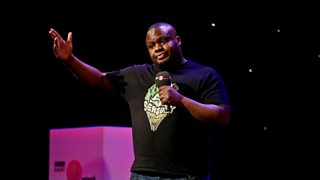
8. Laughter truly is the best medicine
It has been said for yonks, but laughter is incredible for relieving stress, relaxing muscles and getting more oxygen into the body. Having a good chuckle is also a boost to your mental health, releasing endorphins in the brain. However, comedian Nabil Abdulrashid has a personal reason for valuing laughter so highly.
When he spent time in prison early in his life, he took solace in the comedy DVDs that were passed around between inmates. After watching the likes of Eddie Murphy and Dave Chapelle, Nabil noticed something startling: “within a week… the violence went down on [the] wing.” Laughter had a way of taking the tension out of the inmates, and Nabil quickly realised he had a talent for making people laugh. He now frequently revisits prisons to teach conflict resolution. Even in the toughest times, we need laughter to help pull us through.
Why not check out all the episodes of Best Medicine here
More from 麻豆社 Radio 4
-
![]()
Who knew a brew was so good for you?
Dr Michael Mosley investigates the health benefits of the nation's favourite beverage.
-
![]()
Doctor Doctor
We may think we know what a doctor does, but do we really understand what the job entails?
-
![]()
Inside Health
Series that demystifies health issues, separating fact from fiction and bringing clarity to conflicting health advice.
-
![]()
Fed with Chris van Tulleken
How chicken got big. Chris van Tulleken unwraps the forces that shape what we eat.
